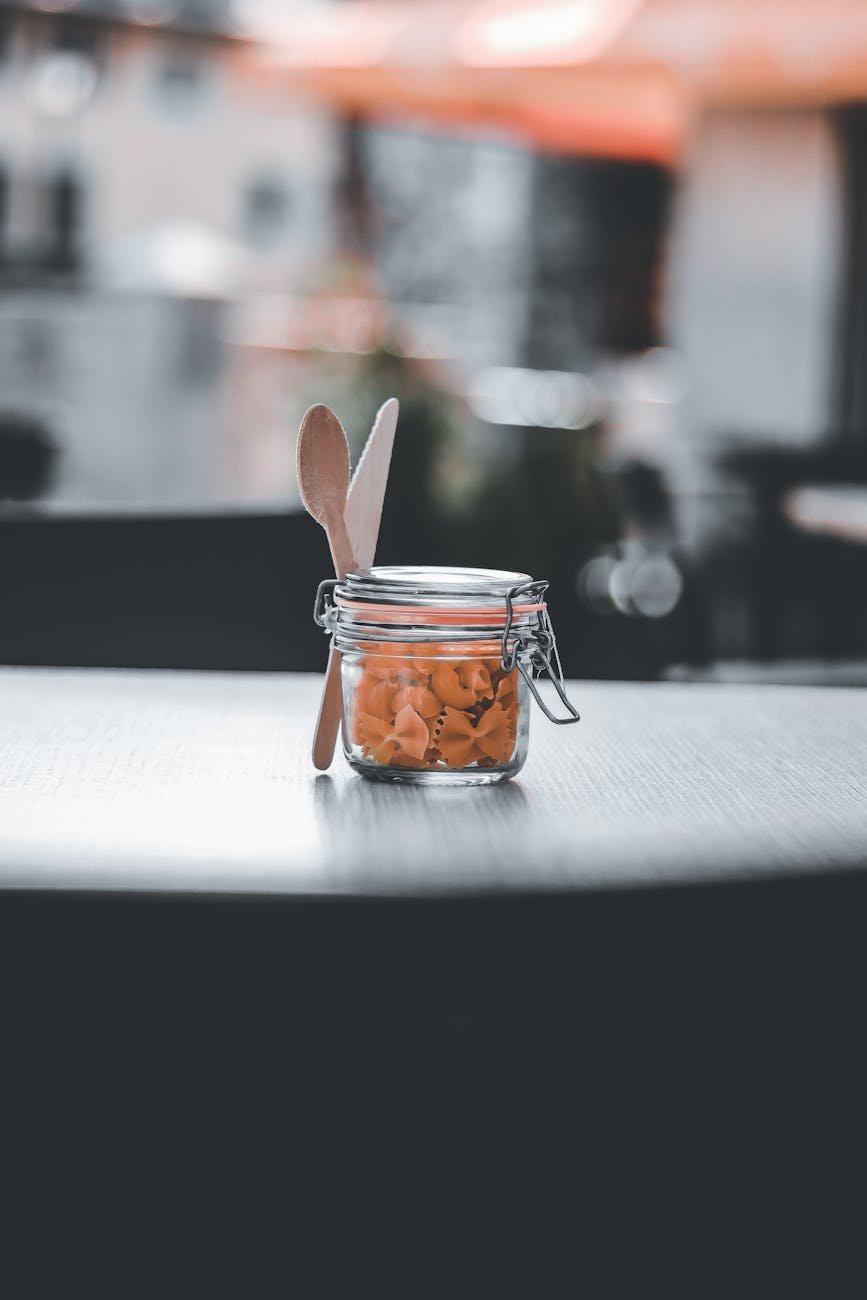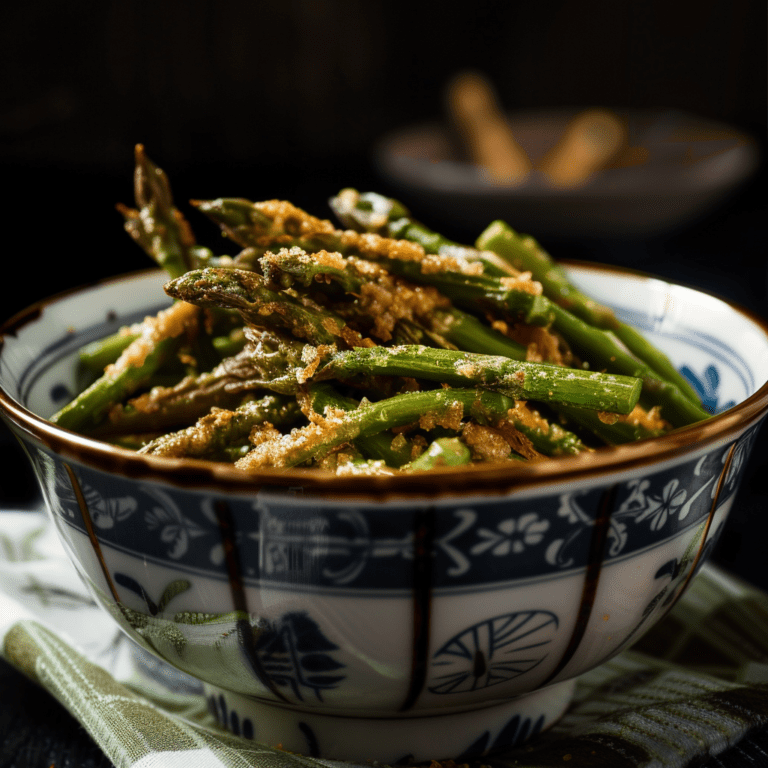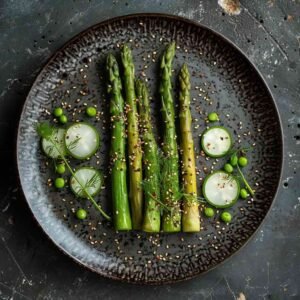Cooking Asparagus: A Quick Guide
Asparagus is a versatile and nutritious vegetable that can be a delightful addition to any meal. Not only is it loaded with essential vitamins and minerals, but it also offers a unique flavor that can enhance a wide variety of dishes. Understanding the different methods to prepare asparagus is key to maximizing its taste and health benefits.
All About Asparagus
Asparagus, known for its distinct, mild flavor and tender texture, is a perennial favorite among vegetables. It’s packed with fiber, folate, vitamins A, C, E, and K, and also contains chromium, a trace mineral that enhances the ability of insulin to transport glucose from the bloodstream into cells. This green spear can be a powerful addition to any diet, promoting digestive health and contributing to a well-rounded intake of nutrients.
When selecting asparagus, one should look for firm, bright green stalks with tight, purplish tips. Thinner stalks are typically more tender, while thicker ones may require additional cooking time. Prior to cooking, it is important to wash the spears thoroughly and to trim away the woody base of the stalks to ensure even cooking and optimal texture.
Different Ways to Cook Asparagus
There are several methods one can employ when preparing asparagus, each bringing out a different aspect of its flavor and texture. Here are some popular techniques:
- Boiling: A quick and simple method that softens the spears, making them easy to eat and digest. Boiled asparagus can be served hot or cold and is often paired with a dipping sauce or vinaigrette.
- Steaming: This gentle cooking process preserves the nutrients and vibrant color of asparagus, resulting in a crisp-tender texture. Steamed asparagus can be finished with a sprinkle of salt and a squeeze of lemon for a light and healthy side dish.
- Roasting: By roasting asparagus at high temperatures, the natural sugars caramelize, creating a slightly sweet and smoky flavor. This method also gives the spears a pleasingly crispy exterior.
- Grilling: Grilling imparts a charred, smoky flavor to asparagus, making it a perfect companion for barbecued meats and summer salads.
- Sautéing: Quickly cooking asparagus in a pan with a bit of oil or butter allows for a slightly crisp texture and a flavor that can be enhanced with garlic, herbs, and spices.
- Blanching: This involves briefly boiling asparagus and then plunging it into ice water, which halts the cooking process and maintains the vegetable’s vibrant green color and crisp texture. It’s ideal for salads or as a snack.
Each of these methods offers a unique take on asparagus and can be tailored to suit different dishes and preferences. For a more comprehensive guide to these techniques and tips on how to master them, explore our series of articles on how can you cook asparagus?
By experimenting with different cooking methods, home chefs can discover the full potential of asparagus and enjoy this nutritious vegetable in a variety of delicious ways.
Boiling Asparagus
Boiling is a classic and straightforward method for cooking asparagus. It’s a quick process that softens the vegetable while maintaining a vibrant green color and a healthy dose of nutrients.
How to Boil Asparagus
To boil asparagus, follow these simple steps:
- Begin by thoroughly washing the asparagus to remove any grit or dirt.
- Snap off the tough ends of the asparagus stalks. These can be easily found by gently bending the asparagus until it breaks naturally.
- Fill a large pot with enough water to cover the asparagus and bring it to a rolling boil.
- Add a pinch of salt to the boiling water to enhance the flavor of the asparagus.
- Carefully place the asparagus into the boiling water.
- Let the asparagus cook until it’s tender but still crisp – overcooking can lead to a mushy texture.
For those seeking different cooking methods, consider visiting our comprehensive guide on how can you cook asparagus?.
Ideal Boiling Time for Asparagus
The boiling time for asparagus can vary depending on the thickness of the stalks. Use the following table as a guide for boiling asparagus to achieve the perfect texture:
| Asparagus Thickness | Boiling Time |
|---|---|
| Thin | 3-5 minutes |
| Medium | 5-7 minutes |
| Thick | 7-10 minutes |
It’s important to monitor the asparagus while it’s boiling to ensure it doesn’t overcook. Once the asparagus is tender, remove it from the water with tongs or a slotted spoon and place it in a colander. If you’re not serving the asparagus immediately, plunge it into an ice water bath to stop the cooking process and preserve its bright green color.
Boiling asparagus is just one way to prepare this versatile vegetable. For more culinary inspiration and techniques on how to enhance your asparagus dishes, make sure to explore our articles on how can you cook asparagus?, where you’ll find a variety of recipes and methods tailored to your taste and cooking preferences.
Steaming Asparagus
Steaming is a popular and healthful method for cooking asparagus. It allows the stalks to become tender while preserving their vibrant green color and natural nutrients.
How to Steam Asparagus
To steam asparagus, one will need a pot with a lid and a steamer basket that fits inside. Here is a step-by-step guide:
- Rinse the asparagus thoroughly to remove any dirt or grit.
- Snap off the tough, woody ends of the asparagus stalks.
- Fill the pot with enough water to come just below the bottom of the steamer basket.
- Bring the water to a boil.
- Place the asparagus in the steamer basket in a single layer for even cooking.
- Cover the pot with the lid and allow the asparagus to steam.
- Steam the asparagus for about 3 to 5 minutes or until it is tender-crisp.
The precise cooking time may vary depending on the thickness of the asparagus stalks. One can always check for doneness by piercing a stalk with a fork to ensure it is tender yet still firm.
Benefits of Steaming Asparagus
Steaming asparagus offers several benefits, making it a favorable cooking method for many home chefs:
- Nutrient Retention: Steaming helps in preserving the vitamins and minerals in asparagus, which can be lost during boiling.
- Flavor Preservation: This method also retains the natural flavor of asparagus, which can be diluted in water when boiled.
- Texture: Steamed asparagus maintains a better texture, being tender but not mushy.
- Calories: No additional fats or oils are needed, making it a low-calorie preparation method.
| Benefit | Explanation |
|---|---|
| Nutrient Retention | Preserves vitamins and minerals |
| Flavor Preservation | Maintains the asparagus’s natural taste |
| Texture | Achieves a tender but firm texture |
| Calorie Conscious | Requires no additional fats or oils |
For more tips on the various ways to prepare this versatile vegetable, such as roasting, boiling, or even grilling, explore our comprehensive guide on how can you cook asparagus?
Roasting Asparagus
Roasting asparagus is a simple and delicious way to prepare this nutritious vegetable. The high heat used in roasting helps to caramelize the natural sugars in asparagus, resulting in a delightful flavor and tender texture. Here’s a guide on how to roast asparagus to perfection.
How to Roast Asparagus
- Preheat your oven to 400°F (200°C).
- Wash the asparagus and trim off the tough ends of the stalks.
- Pat the asparagus dry to remove any excess moisture.
- Spread the asparagus in a single layer on a baking sheet.
- Drizzle with olive oil and toss the asparagus to ensure they are evenly coated.
- Season with salt, pepper, and any other herbs or spices as desired.
- Place the baking sheet in the oven and roast for approximately 12-15 minutes.
The exact roasting time may vary based on the thickness of the asparagus stalks. Here’s a quick reference table for different sizes:
| Asparagus Thickness | Roasting Time (Minutes) |
|---|---|
| Thin | 10 – 12 |
| Medium | 12 – 15 |
| Thick | 15 – 18 |
Tips for Perfectly Roasted Asparagus
- Even Spacing: Make sure the asparagus stalks are not overcrowded on the baking sheet. They should be spaced out evenly to allow for proper heat circulation and to prevent steaming.
- Consistent Size: Try to use asparagus stalks that are similar in thickness for even roasting. If the sizes vary, consider cutting thicker stalks in half lengthwise.
- Seasoning Variety: Experiment with different seasonings beyond salt and pepper. Garlic powder, lemon zest, and grated Parmesan cheese can add an extra layer of flavor.
- Don’t Overcook: Keep a close eye on the asparagus as it roasts to ensure it doesn’t overcook. Overcooked asparagus can become too soft and lose its vibrant green color.
- Post-Roasting Flavor: After removing the asparagus from the oven, you can add a squeeze of fresh lemon juice or a sprinkle of balsamic vinegar for added zest.
Roasting asparagus is just one delicious method among several ways to prepare this versatile vegetable. For more culinary inspiration and techniques on how can you cook asparagus?, explore our various resources and guides to help you master the art of cooking asparagus. Whether you are a seasoned home chef or just starting out, these tips will ensure that your roasted asparagus turns out flavorful and satisfying every time.
- Understand whether you should boil asparagus before cooking and learn how to know when asparagus is cooked all the way



